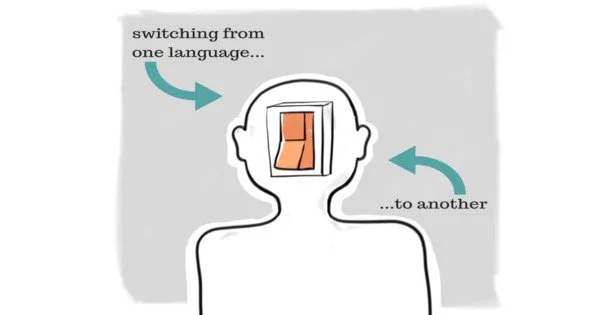When a speaker switches between two or more languages, or language varieties, in the context of a single conversation or circumstance, this is referred to as code-switching or language alternation. It is a linguistic phenomena in which a speaker switches between two or more languages or language variations throughout the course of a single discourse or even sentence. This is a widespread practice in multilingual or bilingual cultures, and it is employed for a variety of reasons, including social, cultural, and communicative ones.
Code-switching differs from plurilingualism in that plurilingualism refers to an individual’s ability to use many languages, whereas code-switching is the act of utilizing multiple languages simultaneously. It can happen at various levels, including the word, phrase, or sentence level.
Multilinguals (those who speak more than one language) frequently use parts of different languages when communicating with one another. Thus, code-switching is the employment of more than one linguistic variety in a way that is consistent with each variety’s syntax and phonology. In synthetic languages, code-switching can occur between sentences, phrase fragments, words, or individual morphemes.
Here are some key aspects of code-switching in linguistics:
- Language Variation: It can entail switching between languages (for example, English and Spanish) or between dialects of the same language (for example, switching between formal and informal discourse in a single language).
- Social and Cultural Factors: Speakers frequently use code-switching to indicate their identity, group affiliation, or social situation. For example, someone may use one language or dialect when conversing with family members and another when speaking at work.
- Grammatical Patterns: It can adhere to grammatical patterns and norms specific to each language or variety. It’s not merely a random collection of words; speakers usually adhere to the syntax and grammar of the language or varieties they use.
- Functional Reasons: It can serve various functions, such as emphasizing a point, expressing emotions, clarifying a concept, or filling lexical gaps. For instance, a bilingual speaker might use a word from one language because it better captures the nuance of what they want to express.
- Audience Awareness: Speakers are often aware of their audience and choose to code-switch accordingly. They may use a language or variety that they believe their interlocutor(s) will understand or prefer.
Examples
Examples of code-switching can include a sentence like “I went to the tienda to buy some groceries,” where “tienda” (Spanish for “store”) is inserted into an otherwise English sentence. Another example could be a conversation where two bilingual speakers alternate between English and Spanish as they discuss various topics.
However, some linguists distinguish borrowing words or morphemes from another language from other sorts of code-switching. Similarly, code-switching can occur when the environment in which one is speaking changes. It can happen when speaking a different language or changing the terminology to match the audience’s.
Code-switching is a fascinating and difficult topic of linguistic research that sheds light on how languages are used and altered in multilingual cultures. It exemplifies the fluidity of words and the rich tapestry of human communication.
















